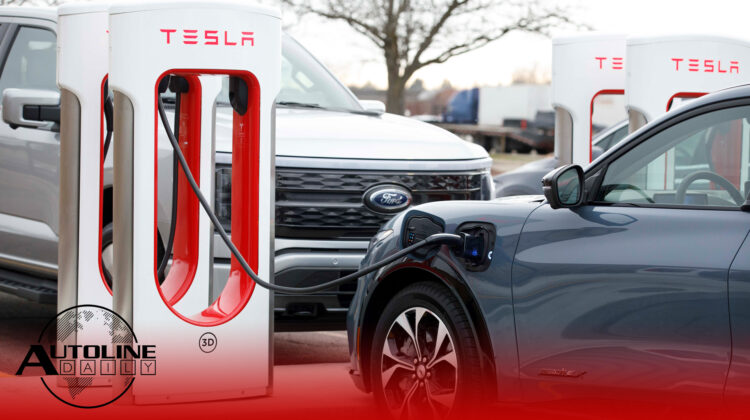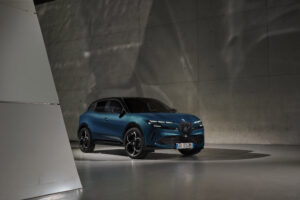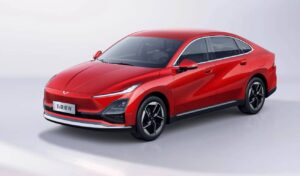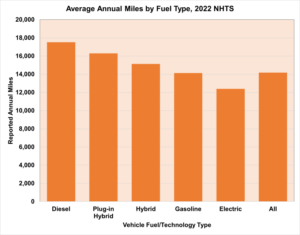
Follow us on social media:
Runtime: 11:02
0:00 Tesla Superchargers Generate Big Bucks
0:47 PHEVs Emit Far More Emissions Than Claimed
1:51 China Q1 Sales Come Roaring Back
2:34 Tavares Warns About Chinese Plants in Italy
3:16 Milano is Alfa’s 1st Electric
5:31 Wuling EV Sedan Starts at $15K in China
6:40 U.S. Auto Insurance Rates Up Dramatically
7:40 Diesel Owners Drive the Most
8:43 Kia Launching 1st Pickup Truck
Visit our sponsor to thank them for their support of Autoline Daily: Bridgestone, Intrepid Control Systems and Teijin Automotive.
This is Autoline Daily, the show dedicated to enthusiasts of the global automotive industry.
TESLA SUPERCHARGERS GENERATE BIG BUCKS
Tesla owners may not like the fact that Elon Musk is opening up the Supercharger network to any EV. But it sure will generate a lot of money for the company. BloombergNEF estimates that last year those superchargers generated $1.7 billion in revenue. And it’s forecasting that Tesla could earn $7.4 billion in revenue from its Supercharger network by 2030, and $740 million in profits, meaning they’ll have a 10% profit margin. Globally, Bloomberg says revenue for all public charging will reach $127 billion by 2030.
PHEVS EMIT FAR MORE EMISSIONS THAN CLAIMED
Plug-in hybrid vehicles are seen as a good transition to fully electric vehicles but a new study from Europe shows they emit way more emissions in the real world than they do in testing. The European Commission says PHEVs emit 350% more CO2 emissions in the real world than their WLTP tests. That’s because drivers don’t charge or drive their vehicles on battery power as frequently as they figured. The data came from onboard monitors equipped in 600,000 vehicles that was gathered in 2021. Onboard monitors, which record fuel consumption and distance driven, have been mandatory since 2021 in all EU vehicles that run on liquid fuel. But researchers say they can’t come to firm conclusions yet because the data is self-reported by automakers and there was a wide gap in reporting. Jaguar Land Rover was the highest and sent data from 43% of its fleet but most automakers sent 5% or less.
CHINA Q1 SALES COME ROARING BACK
New car sales in China got off to a shaky start for the first two months of the year, but in March they came roaring back. For the first quarter of the year, automakers in China sold 6.7 million vehicles, up more than 10% compared to the first three months of last year. First quarter sales of New Energy Vehicles, which include BEVs and PHEVs surpassed 2 million units, up nearly 32%, and they now have 31% market share. Exports were also up strong, with 1.3 million vehicles shipped overseas, up 33% from a year ago. Last year China became the largest exporter of vehicles in the world.
TAVARES WARNS ABOUT CHINA PLANTS IN ITALY
Naturally, this has the rest of the world’s automakers very worried. And they’re not just worried about Chinese exports. They’re also worried about Chinese automakers building assembly plants in other countries, especially in Europe. The Italian government is in talks with Chery to make cars in Italy and Stellantis CEO Carlos Tavares warns that if that happens, Stellantis may have to close assembly plants there. “We’re ready to battle,” Reuters quotes him as saying, “but in a battle there are casualties.” He may get lucky because it looks like Chery is going to Spain, but it could always expand or another Chinese automaker could swoop in.
MILANO IS ALFA’S FIRST ELECTRIC
Alfa Romeo took the wraps off a new compact crossover called the Milano. It’s offered as a hybrid or a BEV and it’s the first fully electric model from the brand. The electric features a 54-kWh battery and two power outputs, 156 horsepower or 240 horses. It has a range of 410 kilometers or 254 miles based on the WLTP cycle. The hybrid’s powertrain features a 1.2L three-cylinder engine combined with a 48-volt lithium-ion battery, 21-kW electric motor and six-speed dual clutch transmission. That setup produces 136 horsepower. Besides the Milano being Alfa’s first electric model, it’s also the first Alfa to be produced outside of Italy since the company’s founding in 1910. The model will be built in Poland alongside Fiat 600 and Jeep Avenger, which are also part of the Stellantis Group. The decision to build the Milano in Poland isn’t a popular one in Italy. But Stellantis CEO Carlos Tavares defended the decision saying it would have to charge 10,000 euros more if it was made in Italy instead of Poland.
WULING EV SEDAN STARTS AT $15,000 IN CHINA
GM and its joint venture partners saw their sales dip 4.6% in China in the first quarter of the year, but their sales of New Energy Vehicles or NEVs were up over 42% to 128,000 units. One of the top sellers is the Wuling Starlight, a small plug-in hybrid sedan with a starting price around $12,500. And now it’s getting an EV version as well, which should help boost sales even more. It comes standard with a 100 kW or 134 horsepower electric motor and there’s the option for a roughly 42 or 54 kWh LFP or lithium iron phosphate battery pack. While similar in most other ways to the plug-in, the EV also gets its own unique front fascia. With a starting price of just over $15,000 we think it’s easy to see why the Wuling brand is so popular with customers. In the first quarter in China, GM and its partners sold a little over 441,000 vehicles, but Wuling alone accounted for nearly 281,000 of those sales.
U.S. AUTO INSURANCE RATES UP DRAMATICALLY
If you live in the U.S. and are getting ready to buy a new car, maybe you better check with your insurance company first. That’s because insurance rates are going up fast. They’re up more than 22% from a year ago, which is well above the inflation rate of 3.5%. Insurance now accounts for about one quarter of the cost of owning a car. The average rate across the country has risen to $182 a month, or $2,184 a year. One reason it’s going up so much is that there’s an increase in storm damage as more extreme weather is becoming increasingly common. Another reason is that cars have more complicated technology that costs more to repair. And a shortage of car techs doesn’t help either. Now brace yourselves. As bad as this sounds, the insurance shopping website Insurify predicts rates will go up at least another 7% this year.
DIESEL OWNERS DRIVE THE MOST
Diesel owners either like to or have to drive more than other American drivers. According to Energy.gov’s 2022 National Household Travel Survey, the average diesel vehicle drove 17,500 miles in 2022. And these are household miles, so we’re not talking about big semi trucks. In a somewhat surprising second place is plug-in hybrids at just over 16,000 miles. And even regular hybrids beat out gas cars, which averaged 14,100 miles. But less surprising is EVs at the back of the pack with an average of 12,400 miles. Obviously, the market sizes of these vehicles are wildly different, but it is interesting to see the difference. We’re guessing that since most of the diesels are probably in pickup trucks, they’re traveling long distances to get to that weekend cabin or hauling stuff for work. But what’s your guess for why PHEV owners are driving so far.
KIA LAUNCHING FIRST PICKUP TRUCK
Kia teased that it’s going to launch its first-ever pickup truck next year, called the Tasman. It says it’s a C-segment truck, which we guess would put it around the size of the Hyundai Santa Cruz. Kia calls it a lifestyle truck, like the Santa Cruz, but we bet it’s more rugged looking. It says the name is inspired by the island Tasmania and is meant to “evoke a spirit of adventure and exploration.” The Tasman will also be sold in markets like Korea, Australia, Africa and the Middle East, where traditional-styled pickups are much more popular.
Say, what’s happening with that $25,000 car Tesla was supposed to come out with? And that small $25,000 EV that Ford’s working on, is that really a good idea? Do Americans really want a small car? And could Toyota blind side everyone by coming out with a killer EV as revolutionary as the first Prius was? Those are some of the topics that are lined up for Autoline After Hours this afternoon. We have Bob Gritzinger from Wards, and Doron Levine, a host on Sirius XM joining John and Gary and we think you’re really going to enjoy this show, which you can find on the Autoline website and our YouTube channel.
But that brings us to the end of today’s show. Thanks for making Autoline Daily a part of your day.
Thanks to our partner for embedding Autoline Daily on its website: WardsAuto.com











Id say the reason PHEVs are driven so much is simply because those were the people that drove a lot before buying an PHEV and saw they could save a lot of money by buying a PHEV. Those provide typically the best range on electric short of buying a BEV, while still having the ability to fill-up quickly and travel long distances.
The diesel is similar in that anyone that drove a lot of miles in a truck knew they would get better mileage with diesel but even more importantly they last longer especially if your towing most of that time.
Learning the hard way if one does not put at least 12,000 miles on a diesel in a year you are just asking for trouble with algae growing in fuel tank and other bits with lack of fuel turnover you just get “krud” in the system
A reason for insurance rates going up wasn’t mentioned. About half of the TV ads I see are for lawyers showcasing perfectly healthy looking people who they got a half million, or 5 million dollars for with law suits. That has to be running up insurance rates.
Being retired, with plenty of spare time, I decided to go by the local Toyota/Nissan/Cadillac dealer to see what they had. They had zero Priuses and zero Siennas. Toyota sells a lot of cars, but they could sell a lot more if they could, or would build them. I keep wondering if they deliberately limit production of some models, or if they still have some kind of parts shortages and can’t build them.
A lot of why plug-in hybrids emit a lot of CO2 is that a lot of people rarely plug them in. They vary widely in how good, or bad they are if you never plug them in. A Prius Prime or RAV4 Prime get good mpg, even if you never plug them in, but a Wrangler 4xe gets worse mileage than some non-hybrid powertrains used in Wrangler.
Years ago, a friend pulling an Airstream concluded that, in his case, a diesel did not save money. He had a diesel Chevy pickup, which got better mpg when pulling the trailer, but little, if any better mileage, not towing, which was about half of his driving. Then, diesel fuel cost ~30% more than gas, and the oil changes were much more expensive for the diesel. In the end, if you tow something big most of the time, diesel pickups probably make sense. If you use the truck a lot for commuting, grocery shopping, etc., without a lot of towing, you’re probably better off with gas.
The other question asked on today’s show. Do Americans want a small 25K EV? I’d say, the real question is do Americans want an EV period? We hear lots about sales trends and how they keep selling more EVs every year but who is begging for this product? According to my link below only about 38% of Americans are even considering an EV for their next purchase. That study didn’t appear to take into account price. So, will a 25K price tag make a difference? Americans in general don’t want small cars. The majority don’t want EVs so I’d say a 25k small EV will not sell well. However, I do believe that if someone was to offer a sporty looking nice two-seater that was around 25K it would sell. EV’s are great go to work vehicles and most people travel alone so a two-seater that doesn’t look like a Ford Fiesta but has an attractive design would probably do pretty well. Just not sure why small has to also be ugly. IMO
https://www.pewresearch.org/short-reads/2023/07/13/how-americans-view-electric-vehicles/
Maybe part of the reason auto insurance has gone up so much, like
Kit said with the lawsuits, I see an awful lot of TV commercials for auto insurance. Most companies are spending a fortune on the TV ads.
Some are very stupid and I think if they would tell how if I have an issue they will help make the experience of getting my vehicle fixed easier. Instead of some kid driving a play car over bushes on the sidewalk.
Wuling is a joint venture brand for GM in China. If they sell cars for $12-$15,000, and much less than that for those tiny EVs they sell tons of, how much profit does GM put in its pocket after splitting it with their Chinese partner? I know costs are much lower in China, but this seems like a hard way to keep the lights on at GM offices.
On EV consideration, the 38% number sounds about right. However, if there were one or two $25k EVs available, that 38% would undoubtedly rise. That price would put an EV on the consideration list of buyers in that price range. Till now, they only had the Bolt to consider, (and maybe the Leaf, a car I never hear anything about anymore).
Current GM diesel touts a 22/33 and 27 combined MPG
While the gas version is a 15/20 and 18 combined MPG
So if your getting 18 add 50% or 9 you get 27
Diesel as of Feb 24 was avg 21% more than gas.
So over 20k miles the Diesel would use $2989 in fuel while the gas used $3566.
Take into consideration if you’re towing, the mileage doesn’t drop as much with diesel and you’re saving even more.
I know one way to lower insurance rates.. As Liberty says at least 10 times a night. “:Only pay for what you need”. And cut your ad budget by a few million dollars and offer a lower rate. They have to have the largest ad budget of any Ins company. They pay for way more than they need.
As a PHEV owner, I’ll guess two reasons people put more miles on them:
– PHEV families may have a choice of vehicles to pick from. For short trips we always choose the PHEV as it feels much more efficient than the gas alternative in the garage.
– People who choose PHEV are those who like the EV experience but drive too much to worry about charging on the road. So we’re the EV drivers who travel.
Bonus reason is that the PHEV fleet is newer than the average ICE vehicle, you will unavoidably pick your newer car for a roadtrip.
Lambo, your diesel vs gas analysis needs to include the initial purchase price premium for diesel (about $10k), oil change maintenance costs, and DEF costs. When all costs are factored, diesel only makes sense for those people traveling very long distances and hauling things.
Drew- Oh I know I had a 40′ diesel pusher with a Cummins 330 and realized very quickly the cost to service was much higher and I was doing it all myself. The number of filters and quantity of fluids alone made it much more expensive to maintain. But as you said for long hauls and brut TQ you cant beat em.
Lambo, the diesel my friend had was the Isuzu V8, whatever they call it. Yeah, that new, smaller inline 6 diesel would be much better as a daily driver, sometimes used for towing. It might be nice in a large sedan, if such vehicles were still made.
You said “However, I do believe that if someone was to offer a sporty looking nice two-seater that was around 25K it would sell.”
Well, it would probably sell to me, if I had home charging, but nearly everyone except me seems to find cars too hard to enter and exit, so they buy lifted vehicles.
Drew,
This is exaclty correct and why the data is not surprising that Diesel powered vehicles are driven the most miles. They are driven by hot shot drivers and RV drivers. Both of whom are driving long distances. Maybe it surprised the people doing the study, but it does not surprise me at all.
The best mpg version of the Silverado diesel gets 23/29 city/highway, 26 combined. The now extinct Colorado diesel didn’t do as well, overall.
https://www.fueleconomy.gov/feg/Find.do?action=sbs&id=46815&id=47112&id=44383
@Drew on diesel. What is your basis for the $10,000 premium for purchasing a diesel-power vehicle? The 3.0 L V6 diesel engine on my Jeep Wrangler Rubicon was $4,000. Whatever value it is, I believe that the residual value is higher than a gasoline-power vehicle thanks to the longer life expectancy, so that has to be taken into account, too. The BlueDEF cost are small potatos. In my case (based on 90,000 miles on three vehicles) $40 per 10,000 miles.
There are people who make choices on other criteria than a cost analysis: I purchased my latest three new vehicles with a diesel engine because I like the ride better: low-end torque and the way the vehicle accelerates. My Wrangler drives amazingly well in terrain with the diesel engine.
Since I see mostly different vehicles than Toyota Corolla’s and Honda Civic’s in traffic I venture to guess that most vehicles are purchased based on more than cost analysis.
I’m with Lambo for the same reason, of the hybrid drivers driving more on average (put the diesel category in as well); these people drive more to begin with, have assessed the benefit of hybrid or diesel as the more economical way to go and made their purchase decision.
And another reason for insurance rates to go up; crappier drivers and higher speed driven.
Lamb2015 — A few years ago, we were in the market for a medium grade compact SUV, for about $25 to $30K and came away with a nicely equipped Hyundai Tucson, at $28K and so change. More a CUV than an SUV, but in that ball park (question, why is it more comfortable [to me at least] to say: “as SUV”, but sounds strange saying: “an CUV”?) This was the model years before they switched to todays version with running lights hidden in the front grill. This vehicle was a nice fit for our three person household. So, a vehicle of that type and size, with a starting price of $25K and nicely equipped for less then or about $30K, might find a lot of interest. IMHO, it probably wouldn’t matter what the powertrain was, if the vehicle had really good styling, but if it were an EV, it would have to have an electric range of 300 to 350 miles! If GMs Equinox EV had the face of the Blazer SS EV, I don’t this they could make enough of them, if the starting price for that model was $30K!
I would be surprised if the reason the reason that insurance prices were going up, had to do with the increase of electrified vehicles, both EVs and hybrids! They both costing more to repair, requiring specialized techs to do the work (with the industry has a shortage of), are heavier, along with other factors that increase their risk and potential cost to insure. Much like way larger SUVs pay higher rates. Even though the passengers are safer, they do more damage to smaller, lighter vehicles and costing them more to repair. So, even though you have the bigger vehicle, in your collection, somewhere else your insurance company is paying out more to repair a smaller vehicle, in an accident with a bigger vehicle like yours! Your higher insurance is helping the company pay for someone else damage vehicle!
I think the EU study is not taking into account one thing. In the EU if you have a company provided PHEV, which is a vast majority of people, you are taxed on electricity you use at home. If you fill it up with gas, you get reimbursed by your company. So, the logical thing to do is use gas only as it is cheaper because the company is paying for it. Maybe the EU should update their tax laws instead of complaining about PHEVs.
@wmb on 300-350 miles of EV range: I see your point. Range is a very important issue for most who own or contemplate an EV. However, range comes at a cost which is not shown to the public. If I were an OEM I would offer the same EV with different ranges: a 200 miles and a 300 miles version, for example. The 300 miles should have a 50% larger battery and should cost much more. That way the range debate can be better handled because people will understand that more range costs money and they will decide for what they really need/can afford.
Wim, do they still sell the Wrangler diesel in markets outside of North America? It’s been gone from the US market for a year or two.
A lot of people call all tall body lifted wagons SUVs, whether an HR-V or a Tahoe. CR does that. It’s mainly we car buffs that use the term CUV.
@Kit on Jeep Diesel overseas: I just checked two countries Germany and Netherlands through jeep.de and jeep.nl
In Germany the hybrid and a gasoline engine are available (no diesel), in the Netherlands only the hybrid. Diesel take rate in Europe overall has dropped drastically from 50% to 25%, if I have understood that correctly.
Interesting. I hope the Dutch buyers plug in those Wrangler hybrids, because they are very inefficient on gas/petrol. I hear that they perform well, though.
Wim — I see your point and in markets outside of the US, that makes a lot of since. Here in North America, though, I could see a compact vehicle with a base price of $25K, with a range starting of with 250 miles of range. I say 250 miles, because, we have to remember, as the weather changes, ‘your range will vary’ and general get worst. That might not matter much for those who charge at home, but not look so appealing for those who can’t. For me personally, I could see paying $30-32K for a stylish, nicely equipped, AWD, EV, but it would be a deal breaker if it didn’t get 300 plus miles of range! Well I would do most of my charging at home, at 300 plus miles, I could theoretically charge once a week, like I do with my current ICE vehicle. That way, in the event of a power outage that last a few days, I could still go to work, if it were safe to do so. I also wouldn’t worry if my wife and daughter forgot to plug the vehicle in for a couple days in a row (for of course “I” would never forget! LOL). With only 200 miles, that would be a concern for me. I think range anxiety includes no just how far you can travel, but for those families that share vehicles, who may have members that, though good hearted and mean well, may at times not be as reasonable as others members of the group.
An EV with 100 miles of range would work for most US commuters with home charging, as the average commute is 41 miles a day. Having 100 miles of range would give plenty of reserve for cold days, etc. Yes, you’d need to plug it in every night, or every other night, like most people do with their cell phone. If you have a shorter, like 10 mile round trip commute, as many people do, you could go a few days on a charge.
Yes, an EV with 100 mile range would not be good for road trips, but most households have more than one car, and at least one could be an ICEr, or better yet, a hybrid.